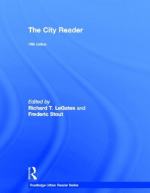
|
| Name: _________________________ | Period: ___________________ |
This test consists of 5 multiple choice questions, 5 short answer questions, and 10 short essay questions.
Multiple Choice Questions
1. Who introduces urban history in the article "New Perspectives on American History"?
(a) Larry S. Bourne.
(b) Frederic Stout.
(c) Kevin Lynch.
(d) Raymond Mohl.
2. What kind of computer software permits users to map data and is useful in studying cities?
(a) KGB.
(b) CIA.
(c) GIS.
(d) NHL.
3. What city is described with the Church initially a factor in its boundaries, though later Charlemagne grew the empire in "City Origins" and "Cities and European Civilization"?
(a) Paris.
(b) Amsterdam.
(c) London.
(d) Rome.
4. Where are the slums and factories located in the city from "The Almost Perfect Town"?
(a) Railroad Avenue.
(b) Myrtle Avenue.
(c) South Main Street.
(d) Locust Street.
5. What urban sociologist did extensive field research in Black ghettos of Chicago?
(a) John Reps.
(b) Lewis Mumford.
(c) Kevin Lynch.
(d) William Julius Wilson.
Short Answer Questions
1. What periodical first published "The Urban Revolution"?
2. When did Friedrich Engels produce The Communist Manifesto with Karl Marx?
3. The author of "The Polis" writes that the term polis refers to more of a what than the current "city"?
4. When was "The Growth of the City: An Introduction to a Research Project" first published?
5. When was "The Almost Perfect Town" first published?
Short Essay Questions
1. What is Richard LeGates' purpose in the article "How to Study Cities"?
2. When did Ernest W. Burgess describe the process of expansion through zones? Why did it occur?
3. Describe author Kingsley Davis. What works is he most well-known for?
4. What type of dwelling and community is described in "Levittown and America"? What does the author conclude?
5. What led to the publication of "The Design of Spaces"? What does this study entail?
6. What impact did the feudal system have on production, according to "The Urbanization of the Human Population"? When did production levels change?
7. What is the subject of the essay "The Uses of Sidewalks: Safety"? What assertions does the author claim?
8. In Friedrich Engels' "The Great Towns," how does the author describe the other side of the river? What does he blame for the urban congestion?
9. What vision is described in Ernest W. Burgess's "The Growth of the City: An Introduction to a Research Project"?
10. How many Americans lived in urban areas in 1960, according to Kingsley Davis? How did this change?
|
This section contains 900 words (approx. 3 pages at 300 words per page) |

|




